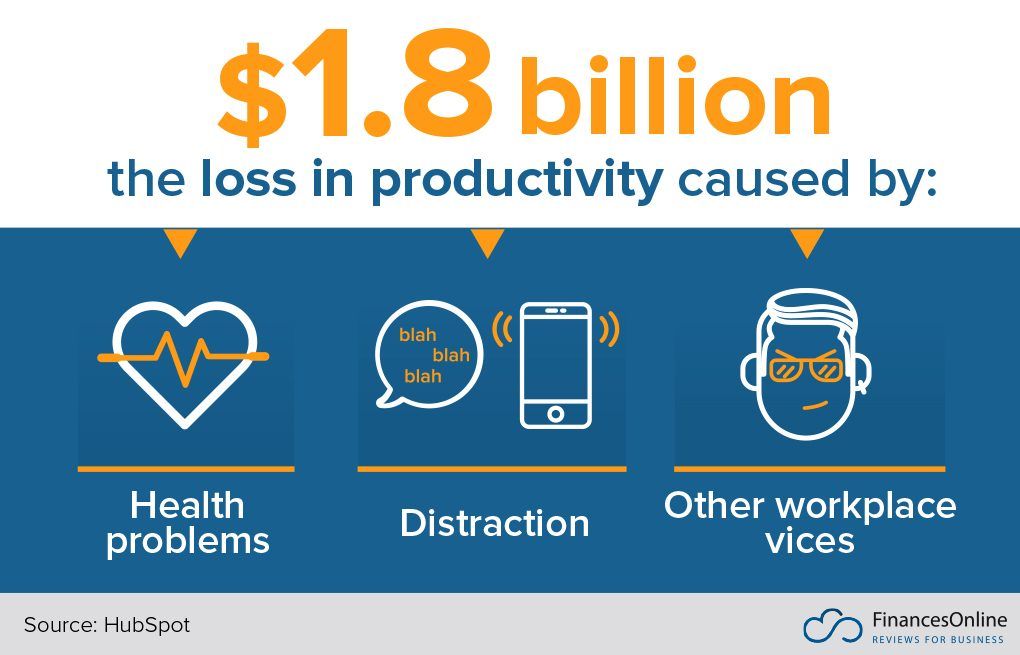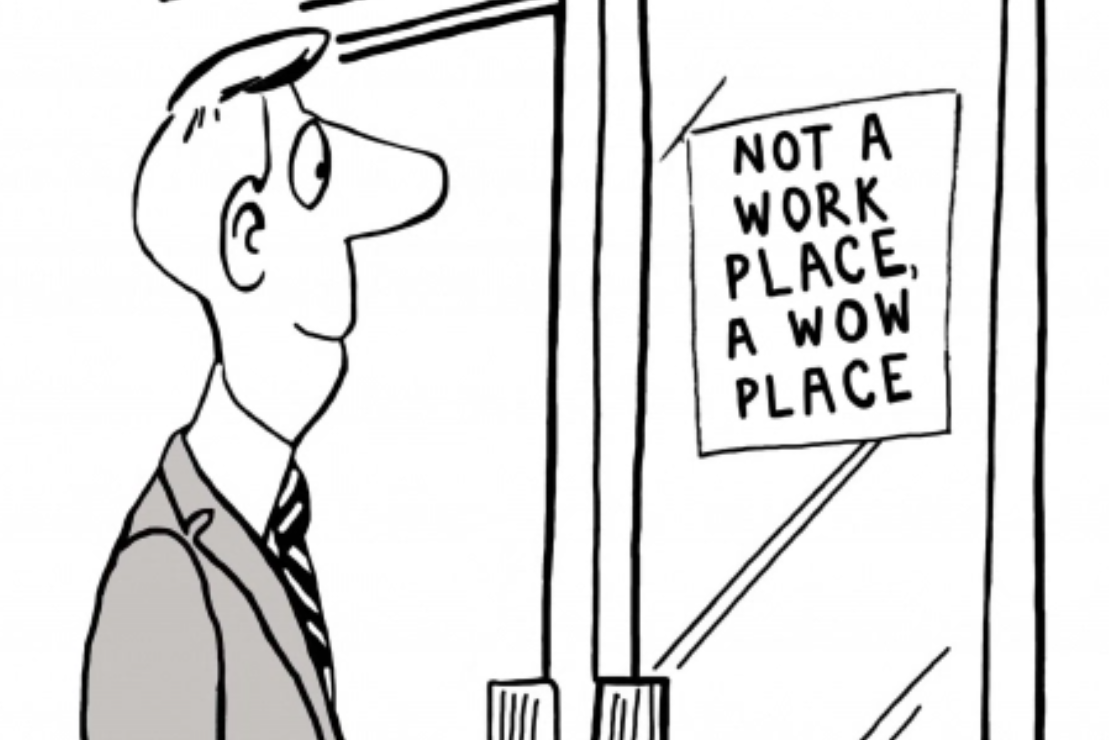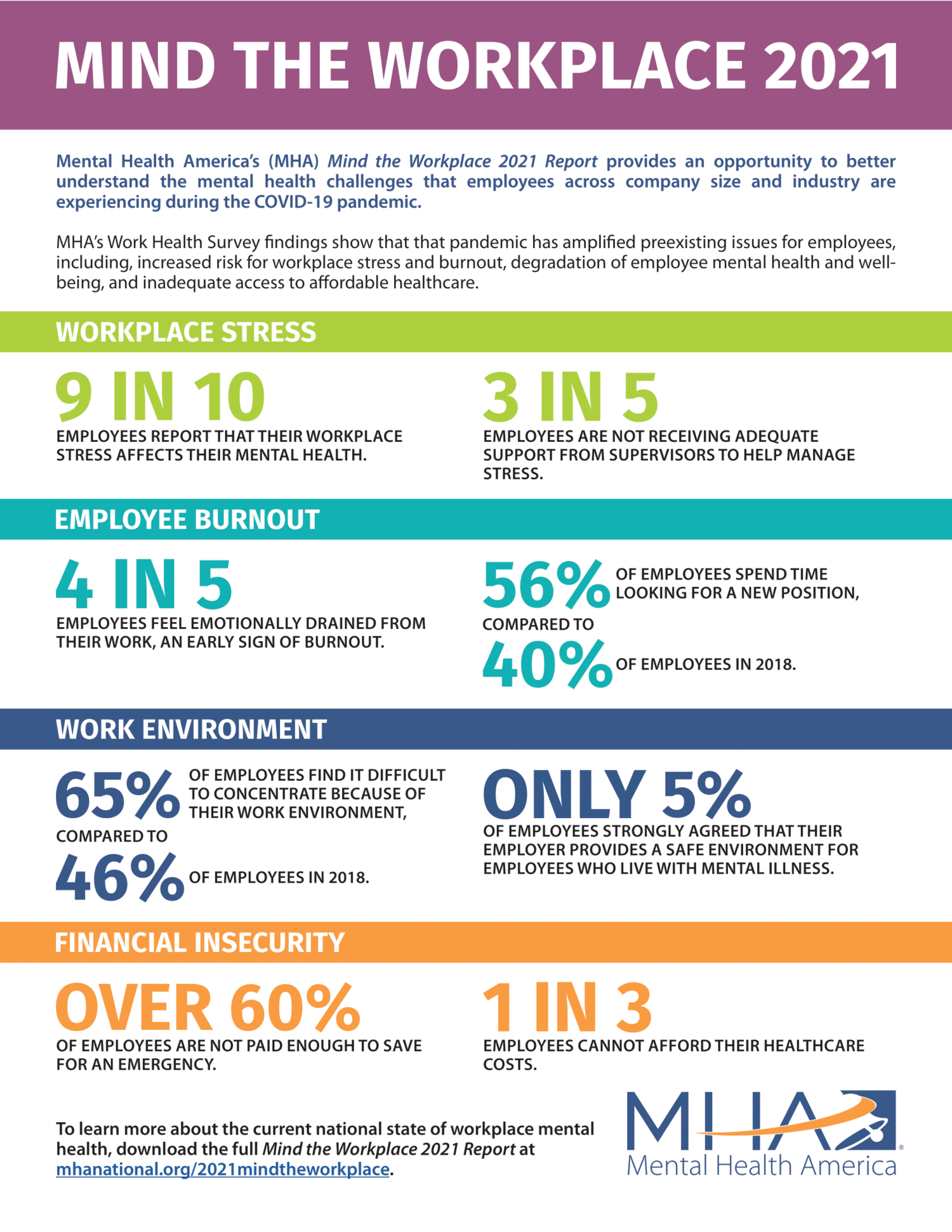10 Productivity Improvement Strategies Your Company Needs to Try
No Credit Card Required.

A productive company is most certainly the ticket to a successful and profitable company. Unfortunately, although many companies strive to hire and retain productive employees who produce a significant amount of work, studies show that employees are only productive for 2 hours and 23 minutes of their work day.
Although these statistics might initially shock you, think back to how often you have walked around the office and seen employees distracted by social media, chatting with other employees, or making endless cups of coffee in the company kitchen.
These situations in themselves are a direct reflection of how productive employees actually are.
With the average American spending 5.4 hours on their phone daily, it is unsurprising that texting and social media can also derail productivity.
Glance around your place of employment. Do you see employees constantly scrolling their phones? If that is the case, then it may be time to consider implementing some productivity improvement strategies at your company.
In this article, we will dive into 10 productivity improvement strategies your company needs to quickly boost productivity and, consequently, employee morale.

What Is Considered a Productive Employee?
To really understand how to have productive employees, we must first understand what a productive employee is. Employee productivity is the output (or work) that an employee produces. A productive employee will have a positive mindset, spectacular time management skills, and high organizational skills, which will allow them to create a significant and quantitative amount of work.
Each employee will have different ways for their productivity to be measured. For example, the work output of someone in the financial department will look quite different than someone in the Human Resources Department. What matters the most is that the employee's manager can define their productivity level, preferably with the employee.
Once the productivity level is defined, a company may start looking into ways to increase productivity.
How to Improve Employee Productivity
When asked to honestly assess themselves, a study discovered that only 7% of employees self-reported feeling productive during the day. This statistic is frustrating not only for the employee but for the employer as well.
For this reason, we will look into 10 remarkable productivity improvement strategies your company needs to try.
#1 Decrease Time Wasting Activities
Like it or not, there will always be ways for employees to waste time on the way. However, incessantly chatting with co-workers and constantly checking social media are in the top tier of time-wasting activities.
The average employee spends up to 32% of their time on social media. One of the main culprits is Facebook, which has cost employers a staggering $28 billion in productivity losses annually.
To avoid this loss company-wide, encourage set breaks during the day for employees to catch up, and add blocks to company-issued computers so employees will not be able to check social media. Then, although they could still check it on their phones, the employees will understand how important it is to remain productive at work.

Source: sandler.com
#2 Invest in Employee Culture
Motivate your company to invest in a strong company culture, as culture and values are cited at the top 23% of influence when finding a new job. Therefore, a company should invest in a solid culture so employees feel connected, engaged, and productive. This is an integral part of a great talent sourcing strategy since employees want to work in places where they feel appreciated.
Motivating employees to participate in company events such as parties, luncheons, workshops, and development opportunities will foster an excellent employee culture and motivate employees to stay a long time with your company.
Employees want to work where they feel heard and appreciated, so offering these opportunities to employees is certain to improve employee culture.

#3 Implement Productivity Improvement Software
When employees work on a specific project, it may seem difficult to track how much time is spent on the project. Thankfully, Apploye allows time tracking and monitoring of employee productivity.
Users can start and end timers manually (or enter the time after the fact) or even automate it on their desktop. With this feature, companies can track how much time a team spends working on a project and give a better picture of where time was spent on improving employee productivity.
#4 Avoid Multitasking
Most employees like to boast that they are excellent multi-taskers. However, they probably are not as great at multitasking as they would like to think. A surprising study from the University of Utah found that only 2.5% of people can multitask effectively, which only supports the harsh reality that very few people are great at multitasking.
Bring awareness to your employees about staying on task and how they should avoid multitasking to increase their productivity. For example, employees may find that setting aside blocks of time for focused work could quickly boost their productivity.
An example of this in action would be an employee setting aside the first two hours of their day every day for a week so they could focus on a specific project. This means they would not check email, answer the phone, or be accessible to other employees so they may focus on their work.
Once they see the company's support of an initiative to avoid multitasking, the employees will most likely feel safe to focus on one project at a time.

#5 Embrace Hybrid or Remote Work Positions
With the pandemic of 2020, almost everyone got a taste of what working from home felt like. Some employees loved it, while others absolutely hated it. Statistics show that 35% of job holders could work from home full-time, and 23 % can do so part-time.
Many employees feel that working from home boosts productivity as they are not disrupted at endless times throughout the day by well-meaning co-workers, distractions, or other office noise.
To ensure hybrid and work-from-home employees stay focused and productive in their work, consider implementing Apploye's add-on Remote employee monitoring, which allows monitoring of off-site staff.
This will remind work-from-home employees of the need to stay productive even when working from home and allow the company to see how well an employee does while working remotely.
#6 Stick to Deadlines
Deadlines are placed to be kept. If one has been implemented, the team should do everything in its power to hit the deadline. Unfortunately, deadlines can become derailed by a lack of productivity, employees feeling lost in the process, and other factors. A manager should always be aware of his/her team's work and how much is left to conclude a product.
Regularly following up with the team for status reports is recommended so the manager may track everyone's productivity and ensure they are sticking to the deadline that was placed.

#7 Avoid Overcrowding Meetings
We live in a day and age where there seems to be a meeting for everything. A survey found that 32% of respondents said they find themselves thinking, "this meeting could have been an email" most or all of the time.
Perhaps companies should take note of Elon Musk's rule for his employees that if you feel like you should not have been invited to the meeting, you should just walk out. Boost your employee's productivity by keeping large meetings to a minimum.
If you need to, use a free bulk email sender and send out an email with actionable items to everyone involved, so they know what needs to be done but do not have to sit through the meeting.
Employees will appreciate that their time is valued and that they can focus on their projects instead of having to sit through many meetings.
#8 Make Sure Employees Have the Right Tools
Nothing is more frustrating than sitting down to work on a project and realizing that you do not have the tools you need to complete the project or that the devices are not working effectively.
However, simple things such as IT or phone issues could readily be resolved as long as employees are empowered to find solutions to their problems.
Try to make the process of acquiring the right tools a seamless one for employees. This will minimize frustrations and directly boost productivity. Additionally, managers should always be aware of whether or not employees have the tools to do their job effectively. If an employee starts off their job with the correct tools, they will already be set up for success.

Source:uncrushed.org
#9 Prioritize Mental Health and Self Care
Healthy employees make great and productive employees – especially those who care about their mental health. Therefore, employers should always motivate employees to take care of their mental health and self-care.
A study from the American Psychological Association discovered that nearly 3 in 5 employees (59%) said they had experienced negative impacts of work-related stress in the past month, and 87% of employees think actions from their employer would help their mental health.
A simple idea is to motivate employees to take a 15-minute "wellness break" during the day, where they could take a brisk walk, clear their head, or even meditate for a few minutes. If a company has an Employee Assistance Program, it should always make its employees aware of how the program assists at little to no charge.
In addition, companies should show employees they care for them and their mental well-being. Also, you can incorporate different work schedules to further ease pressure on your employees.
#10 Reward Quality Work
A company's goal should always be quality over quantity. Yes, employees need to be productive. However, the work should also be high-quality. For example, if an employee is popping out endless projects, but none of them are helpful or correct, that could have been more productive.
Employers should set clear expectations of what they expect from employees and provide continuous feedback so they know whether they are on the right track. Motivate employees to have high-quality work so they may focus their productivity on this outcome.
What Is the Benefit of a Company Increasing Productivity?
A productive company is also a profitable one. For example, a surprising study found that the typical office worker is interrupted, on average, every three minutes and five seconds, and it can take 23 minutes and 15 seconds to get back on task.
Imagine how productive an employee would be if a company could decrease the interruptions the employee faced and allow them to stay focused on their tasks.
By implementing the ideas above and using Apploye's time-tracking system to track time spent on tasks, a company is certain to develop successful and productive employees who will happily stay with the company for many years.
Final Thoughts on How to Implement Productivity Improvement Strategies at Your Company
As shown above, there are many ways that a company can motivate employees to be more productive. By adapting some or all of the strategies above, your company is certain to see a boost in productivity.
Simple things such as using Apploye's Remote Track feature for remote workers and decreasing time-wasting activities will positively affect productivity, and employee morale as morale will be grateful to work for a company that cares so much for them.
Guest Author: Freya Laskowski is an SEO consultant who helps brands scale their organic traffic with content creation and distribution.